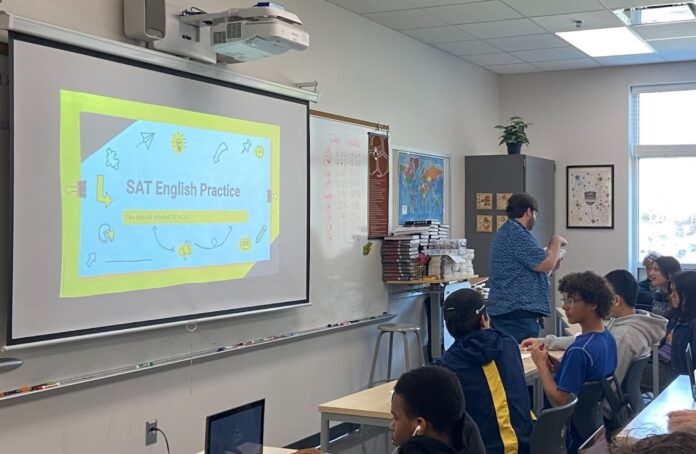
The Standardized College Admissions Test (SAT) has gone fully digital after 98 years of scantron bubbles and No. 2 pencils.
The shift to digital testing will result in a shorter testing window. The total time for a digital SAT is 2 hours and 14 minutes, around 45 minutes shorter than the previous format, which was three hours long.
The new digital SAT has 44 math and 54 reading questions, while the older version featured 58 math questions, 52 reading questions, and 44 writing and language questions.
The test is also adaptive in nature, meaning a student’s performance on the first part of the college-entrance exam will determine the difficulty of the questions the student encounters on the second part.
The first widely administered version of the digital test was given last month on March 9. Students seem to have mixed reactions to the new testing format.
Senior Hannah Gotelli said she felt confident taking the new test, particularly the math section, which now allows students to use a calculator for all questions; the previous version only permitted students to use a calculator on one math section.
“I wish the digital version was available earlier because using a calculator throughout the math section made it much simpler. I think the new version is superior because it’s much less time-consuming,” Gotelli said.
Junior Catherine Gravatt also said she preferred the new digital version of the test.
“I think the new SAT reading was a lot easier, even though you did have to read off a screen. The smaller passages were much easier to comprehend,” Gravatt said.
Not all students, though, liked the new format.
Junior Isis Chien said the digital SAT felt much more complex than the paper-and-pencil version.
“I think the newer version felt much more difficult than the previous version. While you did have the utilization of a calculator throughout the whole section and the reading passages were shorter, it still felt more difficult,” Chien said.
Priscilla Rodriguez, Vice President of College Readiness Assessments at the College Board, said the digital SAT is easier to take, more accessible and more relevant.
“We were hearing from students and educators that students do most of their learning digitally and they really do feel more comfortable taking tests digitally,” Rodriguez said. “They actually told us that having to take a test, especially one like the SAT, using one of those bubble answer sheets, was a real source of anxiety for them.”
While many colleges nationwide have made the test optional—U.S. News & World Report reported that more than 1,900 schools did not require applicants to submit scores in 2024—the tide may be shifting.
Several of America’s top private universities—among them Brown, Dartmouth, Georgetown, MIT and Yale—have eliminated test-optional admissions.
Regardless, math teacher Jade Sweeney said the digital SAT has not changed the way she teaches her class.
“I think in class with the assessments I give, the digital SAT hasn’t really changed the way I do things because I always want my students to be prepared,” Sweeney said.











